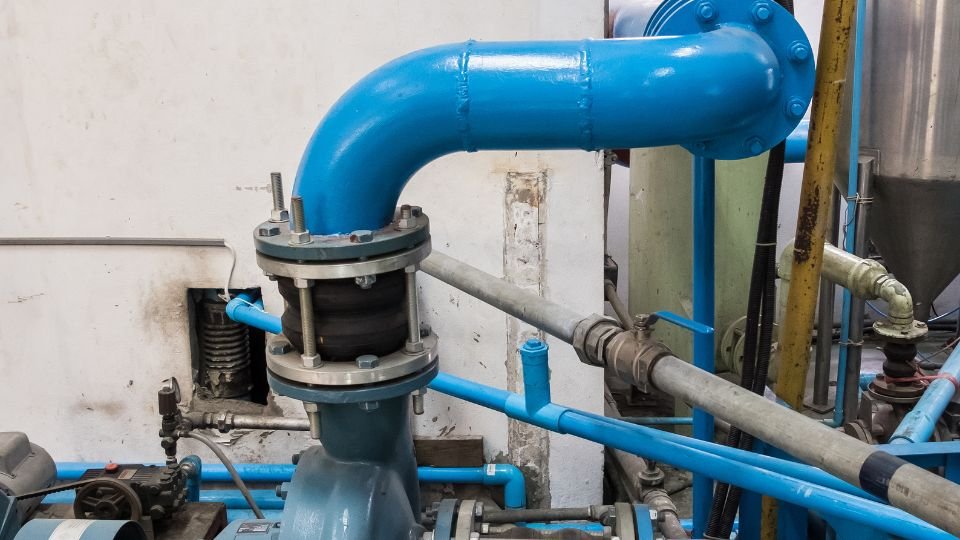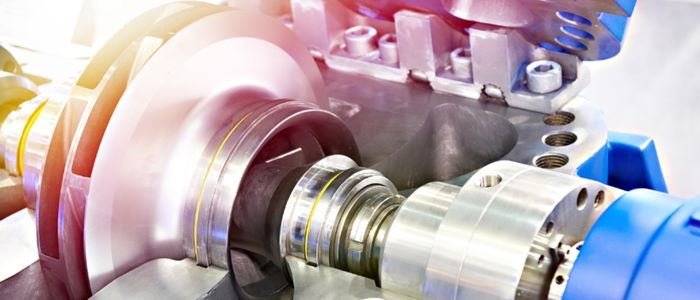Proper operation and maintenance are essential if your centrifugal slurry pump will last a long time and perform well.
This blog post will go over some of the most important aspects of keeping your pump in good condition. Stay tuned!

What is a Centrifugal Slurry Pump and How does it work?
Slurry pumps are designed to handle abrasive and corrosive liquids, making them ideal for various applications, such as mining, dredging, and construction.
The pumps can withstand wear and tear better than conventional pumps; slurry pumps are often used in abrasive environments. It uses centrifugal force to create a vacuum at the eye of the impeller. A vacuum created by pulling the slurry from outside of the pump and pushing it out through the discharge outlet.
Slurry pumps are usually made from materials like cast iron or stainless steel for stability.

Many industries, like mining and construction, use slurry pumps to move corrosive liquids without damaging the pump. If you need a slurry pump, it’s crucial to choose a manufacturer that you can trust to provide a high-quality product.
Centrifugal force creates a slurry flow. The pump impeller rotates at high speed, drawing the slurry into the center of the impeller. The slurry then flows out of the impeller into the pump casing and is discharged.
Centrifugal Slurry Pump Operation
When it comes to operation, a slurry pump is a centrifugal pump with an electric motor that moves abrasive or corrosive fluids. It gets the name “slurry pump” because it primarily transfers slurries, a mix of solid particles in water.
It is used in mining, chemical processing, and power generation industries. Since they deal with both liquids and solids, they’re often made from materials that can resist corrosion and abrasion.
Furthermore, slurry pumps have one or more impellers that rotate inside a casing, generating centrifugal force that causes the slurry to move through the pump.
It enters the pump through an inlet port and is discharged through an outlet port. Moreover, the radial-flow slurry pumps are typically used for applications with high volumes, such as mining operations, which are required. In contrast, axial-flow slurry pumps, such as chemical processing operations, are usually used for applications where low books are sufficient.
The pumps cannot just work for one task; they can have a variety of uses. For example, you could transport slurry from ponds or lagoons to and from processing plants, circulate sludge in sewage treatment plants, and move tailings from mines.
Hence, you could also use Slurry pumps for other industrial applications, such as moving coal ash in power plants and Drill cuttings in oil rigs.
Centrifugal Slurry Pump Maintenance
In addition, as to the process of maintenance. Since a centrifugal pump is used to transport slurry or sludge-like materials, the impeller is the main difference between slurry and regular centrifugal pumps. The pump has an impeller with a larger diameter designed to move thick, viscous fluids.

Since centrifugal slurry pumps are regularly used to move sludge or residue in various industries, like mining and construction and oil and gas exploration, slurry pumps are durable and can handle high volumes of abrasive materials. This materials primarily require some maintenance to keep them running smoothly.
Here are some tips for maintaining your slurry pump. Check this out!
- Examine the pump regularly for any damage or wear.
- Check the slurry pump housing for any cracks or other forms of damage.
- Monitor the slurry pump impeller for wear or damage.
- On an as-needed basis, clean or replace the slurry pump seals.
- Lubricate the slurry pump bearings by following the manufacturer’s directions.
Always remember that the pumps play a vital role in many business transactions, so it’s crucial to keep them well-maintained. by following these simple guidelines. Companies can prolong the life of their slurry pumps and ensure flawless operation for many years.
How to Troubleshoot a Centrifugal Slurry Pump
To discuss further how to troubleshoot a centrifugal slurry pump, always be mindful that Slurry pumps are centrifugal pumps that move abrasive and high-density slurries.
Over time, abrasion wear, erosion wear, or corrosion can greatly diminish pump performance. In ensuring optimal performance, it is essential to troubleshoot slurry pump issues as they arise.
The first step in troubleshooting a slurry pump is to check the suction side for blockages. If something impedes the slurry flow into the pump, it can create cavitation, which causes the pump to lose its prime.
Another issue that often arises is worn-down impellers or other moving parts. Without proper maintenance, particles in the slurry can wear away at Metal surfaces and make the pump less effective until it eventually fails.
Another problem that may occur is air getting into the slurry pump, which can cause cavitation and loss of prime. To fix this issue, check all connections and seals on the suction side of the pump for leaks.

In addition, examine the slurry itself for excessive air bubbles. If you determine that air is entering the slurry, you might need to add a mechanical seal or increase the slurry density.
Troubleshooting a slurry pump can be a complex process. However, by following these simple steps, it is possible to identify and correct slurry pump problems quickly and efficiently.
If you think slurry is escaping from your slurry pump, you can troubleshoot the problem by checking the following:
- Look over that the faceplate is appropriately attached to the slurry pump. The faceplate should be flush with the housing of the slurry pump.
- Check that the rotating insert is appropriately mounted on the shaft of the slurry pump impeller. The insert should be snug against the post and should not be able to rotate on the shaft.
- Inspect the seal for wear or damage. If the seal is damaged, it will need to be replaced.
- Examine that there is no build-up of slurry around the seal. If there is a build-up, it will need to be removed.
If you have applied all these things and still think slurry is escaping from your slurry pump, you should consult a professional for help.
Tips for Extending The Life of your Centrifugal Slurry Pump
Take a look at these tips for extending the life of your centrifugal slurry Pump. It works best with abrasive, viscous liquids and highly concentrated slurry.
They are primarily used in farming, mining paper pulp production, and other food processing applications requiring durable pumps. Although these types of pumps have a long lifespan, several ways still exist to help extend their life even further.
Did you know that slurry pumps need to be constantly primed?
Always have extra slurry nearby to keep priming the pump as required. If the pump ever runs dry, it will overheat and break irreparably.
The slurry’s consistency is crucial for maintaining the pump—if it’s too thin, it will overheat from a lack of lubrication. On the other hand, if it’s too thick, the pump will be overwhelmed and won’t work correctly.
Lastly, it would help if you always looked over your slurry pump for telltale signs of wear or destruction. If anything looks amiss, be sure to get it patched up right away.
Attending these little details will go a long way toward extending the life of your slurry pump.
If you’re looking for a centrifugal slurry pump that is durable and long-lasting, look no further than the pumps from here. Our centrifugal slurry pumps are designed for optimal performance in harsh environments and can handle many applications.
We also offer comprehensive maintenance and repair services to keep your pump running like new for years to come.
For more information about our centrifugal slurry pumps, visit our website today.


